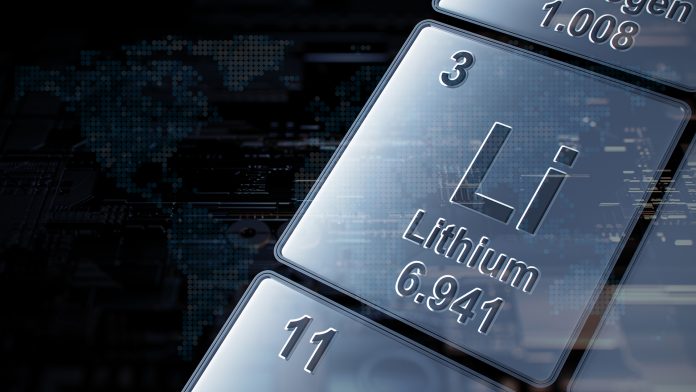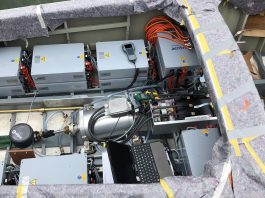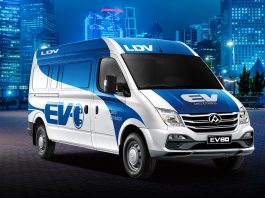International Battery Metals (IBAT) and its partners are dedicated to bringing about a green lithium extraction revolution.
It is interesting to see how the world has changed over the last 50 years. In 1971, we were concerned about peak oil and the pollution of our air and water. The thought of electrification of our transportation fleet, much less redesigning and replacing the world’s energy infrastructure, was a pipe dream. Today, we are seeing one of the largest paradigm shifts in our collective lives. We are crossing a threshold. Once we get through it, everything will be different, for better or worse. The truly amazing thing is that this shift is critically dependent on one tiny element in the periodic table, lithium (atomic symbol Li).
So, why would the aspirations of so many people depend on one chemical element? The answer is batteries. The new green strategy is totally dependent on light weight, low cost, high energy batteries. Without those, our energy transformation cannot work.
Due to its atomic structure, lithium is the most efficient battery metal in the periodic table, if one wants high power, high capacity, and light weight. There is optionality for all of the other battery components. Lithium is unique. Other potential battery metals that have been explored simply do not meet lithium’s unique capabilities.
Many of us in the lithium industry believe that lithium is destined to become one of the most important commodities on the planet. Short- and long-term projections demonstrate very high demand for lithium battery materials. Yet, even though lithium is the lynchpin of our new global energy strategy, its production is just beginning to receive significant attention.
The public image of the lithium industry is one of extreme optimism. A quick perusal of the websites of large lithium producers will leave us with a warm, happy feeling. One website even uses cartoon characters and happy children’s voices that extol the environmental care and efficiency of the producer. The industry is presenting an image that says, ‘trust us, we have everything under control.’
The reality, however, is not so rosy. In fact, the lithium production industry is in a crisis. It faces huge, almost intractable problems that must be openly addressed. If not, our environmental dreams will rest on an underperforming industrial mess with global implications.
In the remainder of this paper, I will discuss the industry’s environmental issues and its inability to meet burgeoning demand. Then, we will present an alternative that has the potential to significantly improve these problems.
Environmental issues with lithium production
Lithium has traditionally been produced from two sources, spodumene, a lithium baring pegmatite mineral, and high salinity brine resources such as those found in South American salars. Other resources are being touted such as low-grade oilfield brines in Alberta and lithium baring smectitic and illitic clays in Nevada. While these potential resources deserve evaluation, they are unlikely to become significant. Today, the only significant lithium production comes from spodumene mining and lithium extraction from Chilean and Argentine salar brines.
Spodumene production
Spodumene is a lithium-containing pegmatite mineral that is generally found around the world. Currently, the premier spodumene mine in the world is Greenbushes in Australia.
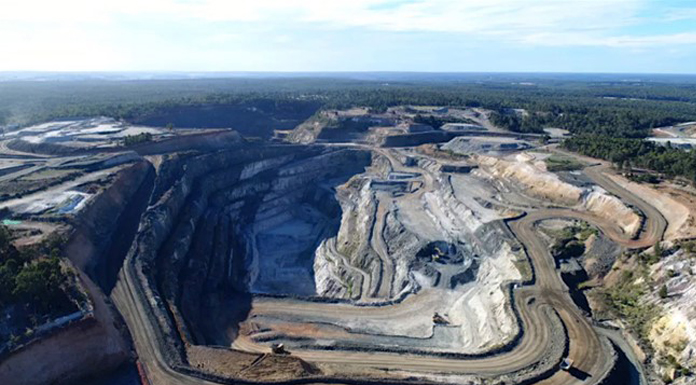
Spodumene processing is complicated, expensive, and carries numerous environmental problems. Today, most spodumene mines ship crushed rock to China for chemical processing. Due to the lack of transparency of the Chinese extraction industry, details of chemical waste handling are not available. Traditionally, spodumene mining and refining operations consume large quantities of chemicals and utilise tailings ponds and waste chemical lagoons to deal with their solid and liquid wastes. This practice carries much of the same issues as other mining operations, including contamination of ground water, rivers and soil.
Lithium extraction from brines
It has been estimated that global brine resources contain approximately 59% of the world’s known lithium.1 Most of the proven brine related lithium resources are in the Lithium Triangle in South America, Bolivia, Argentina, and Chile. These brines are found in salars, which resemble salt flats. They are actually porous structures that extend deep into the Earth. The pores are filled with saturated salt brines of varying composition. Salar brines contain lithium concentrations ranging from ~100 ppm to as high as ~3000 ppm. The salars that are currently being commercially produced have lithium ranging from about 600 ppm to approximately 2,000 ppm.
Solar evaporation
Currently, only two lithium extraction processes are commercial. The first process, solar evaporation actually had its roots in salt production in the bronze age. Foote Mineral Corporation, which ultimately became part of Albemarle, built a commercial solar evaporation process to produce lithium at Silver Peak, Nevada in 1966. Foote began operations in the Atacama in 1984.2 SQM, which had developed a solar evaporation potash process, began lithium production in the mid-1990s.
In 2019, commercial lithium producers, Albemarle and SQM produced approximately 19,300 MT of lithium on an elemental lithium basis (102,014 MT lithium carbonate basis) Chile possesses some the largest know reserves in the world. However, Chile’s lithium expansions have not kept pace with growing demand. Environmental issues associated with solar evaporation processes, which have been prominent over the last several years, have contributed to this lack of expansion. These issues even contributed to the social unrest and riots in 2019.6 Briefly, the problems are:
- Dropping brine levels in Salar Atacama;
- Lithium and copper industry’s ground water consumption;
- Waste salts are stacked on the desert; and
- Lithium recovery rates are low. Low recovery rates enhance the environmental issues because more brine must be pumped to meet production demands.
These problems are a direct result of the current extraction processes. A result of these issues is that the Chilean government has refused to allow Albemarle and SQM to proceed with planned expansions.
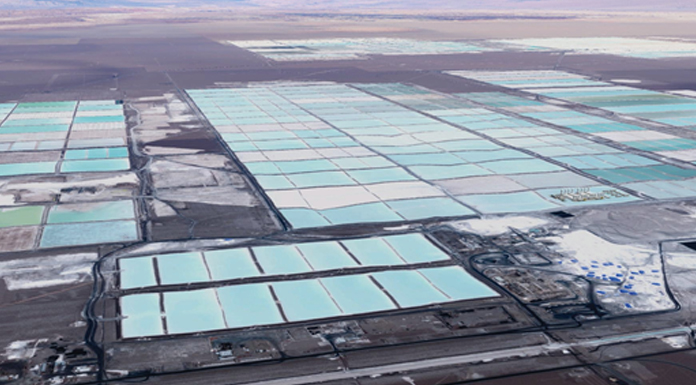
Selective absorption
In 1998, FMC corporation started up its lithium extraction process which is based on a highly selective absorbent invented by myself and W C Bauman in 1992.8 It should be noted that this invention was a culmination of years of work at The Dow Chemical Company.9-19
Later, I joined FMC corporation and invented their lithium extraction process. FMC produces approximately 4,000 MT of Li at their site on Salar Hombre Muerto. Originally, there was no solar evaporation of brine feed in this process. However, waste brine has always been pumped into a low area on the edge of the salar, where it evaporates. Internally, the process uses evaporation ponds to increase lithium chloride concentration before it is transferred to the lithium carbonate operation or feed for the anhydrous LiCl plant. The plant draws water from local freshwater aquafers. Much of the plant’s process water is recycled.
While there are those who will disagree due to the evaporation ponds, FMC’s plant is the first commercial Direct Lithium Extraction (DLE) in the world because it literally removes lithium from the brine that exits the process.
Development and expansion rates
Over the last few years, several sources have been predicting a significant supply/demand short fall beginning as early as 2025. Benchmark recently provided their projections that suggest 1,245,400 MT LCE shortfall in 2030.20 To put this in perspective, the projected production will only be 1,072,000 MT LCE. This is an astounding 54% projected shortfall. Most commodity industries are scrambling when a production short fall is greater than about 6%. The lithium industry leaders have been pretty quiet.
This problem is not new. Each year, industry leaders have announced very large expansions and explained that there will always be enough lithium. Over the last five years, the projected brine expansions have not been built. In fact, they have not even begun. Solar evaporation expansions require years to come online. Only spodumene production has increased.
So, one must ask what is wrong? Why is spodumene production the only thing that is expanding? There are two parts to this answer.21
First, the largest brine producers, Albemarle and SQM, operate in the Atacama, where environmental issues and press exposure are so severe that the Chilean government has put expansions on hold. Albemarle has announced an expansion of their US operation at Silver Peak, Nevada. However, this operation is simply not large enough to move the needle.
The second problem is building and starting up an operation at a new location. Solar evaporation projects are very expensive. The cost of building a greenfield 20,000 MT lithium carbonate facility typically begins at $600m. With cost overruns, that are very common in these operations, it could easily push $850m. Then, there is the issue of starting the operation up. History has demonstrated that start-up times for solar evaporation plants are in the range of ten years or greater. There have also been ongoing issues with product quality. Quality for some of these producers is so poor that their only option is to send their output to China for reprocessing.
With issues like these it is not surprising that it is very difficult to fund a large greenfield solar evaporation project. The challenge is even greater for junior lithium companies with thin balance sheets and no operational history.
The path forward
It is very clear that the lithium extraction industry desperately needs to shift to cleaner, faster, less expensive technologies. Even FMC’s operation, which is the best of the lot, has numerous problems.
Over the last decade there has been a lot of hype and excitement over new and novel technologies that will solve this problem. Unfortunately, most of these technologies will never be commercial. Designing a process to selectively extract lithium from complex saturated brines is stunningly difficult. Designing one that can be profitable is much more difficult. Most of these projects are either reworks of old ideas that were tried and failed in the 1980s or new concepts with marginal operational bases. What works in the lab does not always work at scale.
At International Battery Metals, we have been developing the sort of transformational technology platform that will be critical for the lithium industry and the entire green energy movement. The core of our technology has had a long development period, beginning with work at The Dow Chemical in the late 1970s and 1980s. Our team, led by William C Bauman, PhD, developed a modified ion exchange resin system that selectively extracted lithium from complex brines. The process worked. However, it was not commercially viable. This was the First-Generation Selective Absorption process.
In the early 1990s, Bill and I invented a new selective absorbent that has extreme selectivity coefficients, favouring lithium over calcium and magnesium by well over 1000:1. A few years later, this absorbent became the core of FMC’s lithium extraction process at Hombre Muerto in Argentina. This operation defined the Second-Generation Selective Absorption process.
IBAT’s new Generation 3 system uses an improved selective absorbent, new technology, and a radical engineering concept. IBAT’s design is based on the following key premises:
- Capital cost for a 20,000 MT LCE plant must be a fraction of the current norm. For instance, we are targeting total capital in the range or $150m to $200m for lithium extraction and lithium carbonate production. In current dollars, this number is substantially lower cost than FMC’s plant which cost approximately $120m in 1998, or about $250m in 2021 dollars;
- Our operating costs must be among the lowest in the industry. We believe that this is possible because of the simplicity of Selective Absorption process and our impurity rejection. Most of the cost associated with solar evaporation processes are realised in their lithium purification circuits;
- We are designing for extremely high recovery rates. All of the commercial lithium from brine operations have poor lithium recovery rates, between 20% and 40%. When fully implemented, we are designing our plants to reach greater than 90% recovery of lithium;
- We are focused on extreme environmentalism. This includes greater than 95% internal recycle of process water in the lithium extraction circuit and direct reinjection of depleted brine. However, please note that, currently, brine reinjection is not practiced in Chile or Argentina. Therefore, this approach must be vetted and approved by the respective environmental agencies; and
- Lastly, and potentially most important, we plan to be able to put a 20,000 MT plant in place and start it up in less than two years.
These goals admittedly appear to be outlandish. However, there is reason behind them. Between 1994 and FMC’s plant start-up in 1998, we developed a process to produce the absorbent at scale, designed the full processing plant, did the detailed engineering, and built and started up their facility at 14,000 ft elevation at Hombre Muerto. Collectively, we accomplished this with a total capital expenditure of about $120m. I am not aware of any other lithium from brine extraction plant that can match FMC’s record for construction and start-up time and capital cost. The FMC team succeeded for two reasons. First, FMC had one of the best and most dedicated engineering staffs that I have ever seen. Second, the basic simplicity of the selective absorption process made task much easier.
Today, our advantage will be the use of novel technology and our patent pending modular design. IBAT’s engineers and procurement staff have purchased all of the critical equipment for our first module. We, in conjunction with our JV Partner, Ensorcia, anticipate that construction will be complete in mid-summer 2021. We also anticipate that our first mobile extraction unit will be operating on a South American salar by the first quarter of 2022. This demonstration plant will produce small but commercial volumes of lithium chloride. Once we are satisfied with its performance, it will be quickly expanded to 20,000 MT production facility.
This plan is not just an aspiration. It has been carefully engineered and laid out. As I write this article, our team is executing the plan. We believe that approaches such as IBAT’s will be necessary for the world to realise our collective aspiration of low-cost clean energy. IBAT and its partners are dedicated to bringing about a green lithium extraction revolution.
References
- Laurence Kavanagy, Jerome Keonane, Guiomar Garcia Cbellos, Andrew Lloyd, and John Cleary, ‘Global lithium Sources –Industrial Use and Future in the Electric Vehicle Industry: A Review’, MDPI, September 11, 2018
- Minerals Yearbook Volume 1, US Bureau of Mines, January, 1992
- Major countries in worldwide lithium mine production from 2010 to 2020, Statista 2021
- Dave Sherwood, ‘Chile, one the world’s lithium leaders, loses ground to rivals’, Reuters, May 30, 2019
- Rennie B Kaunda, ‘Potential Environmental Impacts of Lithium Mining’, Journal of Energy & Natural Resources Law, 38:3, 237-244.
- Ingrid Wehr, Sebastian Aynzua, and Javiera Valencia, ‘Social unrest in Chile and its effects on the climate agenda and COP25’, eu.buell.org, 28, November, 2019
- ‘Albemarle puts Chile lithium expansion on hold’, Bnamericas, November, 9, 2018
- W.C. Bauman, J. L. Burba, ‘Recovery of Lithium from Brines’
- John L Burba, US Patent # 4,385,295, Crystalline Lithium Aluminates, December, 1980
- John L Burba, US Patent # 4,385,296, Crystalline Lithium Aluminates, December, 1980
- John L Burba, US Patent # 4,461,714, Method of Making 2-layer Lithium Aluminates in Ion Exchange Resins, July 24, 1984
- John L Burba, US Patent # 4,472,362, Regeneration of crystalline lithium aluminates
- John L Burba, US Patent # 4,477,367, Crystalline 2-layer lithium-hydroxy aluminates
- John L Burba, US Patent # 4,450,509, Crystalline 3-layer lithium aluminates
- John L Burba, William C Bauman, US PATENT # 4,812,245, Intercalations of crystalline lithium aluminates
- John L Burba, William C Bauman, US PATENT # 4,812,246, Intercalations of crystalline lithium aluminates
- William C Bauman, and John L Burba, US PATENT # 5,389,249, Recovery of lithium values from brines
- William C Bauman, and John L Burba, US PATENT # 5,599,516, Recovery of lithium values from brines
- William C Bauman, and John L Burba, US PATENT # 6,280,693, Composition for the recovery of lithium values from brine and process of making/using said composition
- Benchmark Mineral Intelligence
- Ibid, Statista, 2021
Please note, this article will also appear in the sixth edition of our quarterly publication.

